Fashion Design Essential Skills and Techniques Every Designer Should Master
Introduction
I. Sketching and Illustration: The Artistic Blueprint

A. Importance of Sketching in the Design Process
At the core of any fashion designer’s journey lies the ability to translate ideas onto paper. Sketching is the initial step in the creative process, providing a visual language that communicates the designer’s concepts. From quick thumbnail sketches to detailed illustrations, the art of sketching allows designers to articulate their visions, experiment with shapes, and refine their ideas before moving on to the production stage.
B. Developing a Unique Illustration Style
While mastering the basics of sketching is crucial, developing a unique illustration style is what sets designers apart. The ability to convey a signature aesthetic through illustrations not only strengthens a designer’s brand but also fosters a deeper connection with their audience. Whether it’s bold and expressive strokes or delicate and intricate details, an individualized illustration style becomes the designer’s visual fingerprint.
C. Integrating Technology in Sketching
In the digital age, traditional sketching has found a companion in technology. Fashion designers must embrace tools like graphic tablets and software such as Adobe Illustrator to enhance their sketching capabilities. Digital sketching allows for easy revisions, experimentation with color, and seamless integration with other design processes.
II. Fabric Knowledge and Selection: Building the Foundation
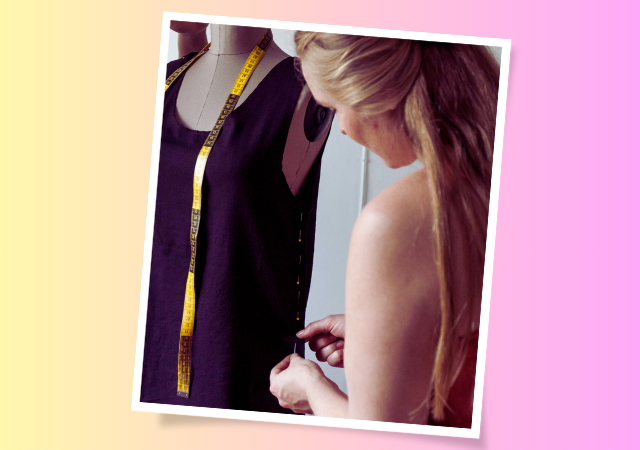
A. Understanding Different Types of Fabrics
A profound knowledge of fabrics is the cornerstone of successful fashion design. Designers must familiarize themselves with a vast array of textiles, from natural fibers like cotton and silk to synthetic materials such as polyester and nylon. Each fabric possesses unique properties that influence the drape, texture, and overall feel of a garment.
B. Identifying Fabric Properties and Their Impact on Design
Beyond recognizing different fabrics, understanding their properties is essential. Factors like elasticity, durability, and breathability play a crucial role in the functionality of a garment. Designers must consider these properties when selecting fabrics to ensure that the chosen material aligns with the intended design and purpose of the garment.
C. Sustainable and Ethical Fabric Choices
In an era where sustainability is at the forefront of the fashion industry, designers must be conscious of their material choices. Exploring eco-friendly fabrics, recycled materials, and ethical sourcing practices not only align with contemporary values but also contribute to a positive brand image.
III. Sewing and Pattern Making: Precision in Construction

A. Mastering Basic Sewing Techniques
A fashion designer’s journey is incomplete without a solid grasp of basic sewing techniques. From stitching seams to attaching buttons, understanding the fundamentals of sewing is crucial for bringing a design from concept to reality. Attention to detail in this stage ensures the durability and quality of the final product.
B. Creating Custom Patterns for Unique Designs
Pattern making is the architectural blueprint of fashion design. Designers skilled in pattern making can bring their unique visions to life by creating custom patterns tailored to their designs. This skill allows for experimentation with unconventional shapes and silhouettes, pushing the boundaries of traditional fashion norms.
C. Importance of Precision in Garment Construction
Precision in garment construction is a hallmark of a skilled designer. From the alignment of seams to the placement of embellishments, attention to detail is paramount. Precision not only enhances the aesthetic appeal of the garment but also ensures a comfortable and well-fitting end product.
IV. Color Theory and Color Palettes: The Art of Visual Harmony
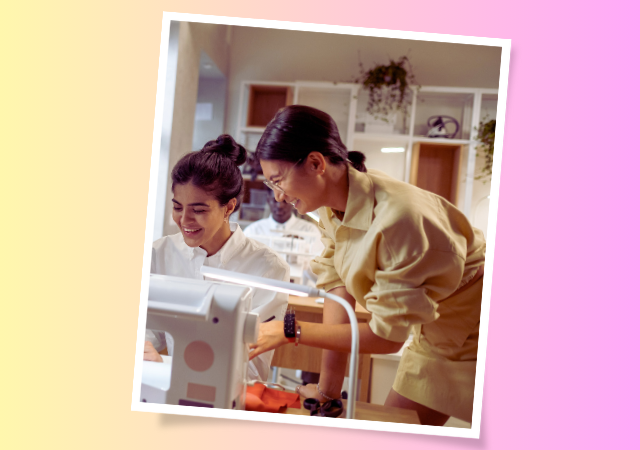
A. Significance of Color in Fashion Design
Color is a powerful tool in the hands of a designer, evoking emotions and setting the tone for a collection. Understanding the psychological impact of colors and their cultural connotations is essential. Whether creating a bold statement piece or a subtle, understated ensemble, color choices play a pivotal role in the overall design narrative.
B. Creating Harmonious Color Palettes
Mastery of color theory goes beyond choosing individual hues; it involves creating harmonious color palettes. Designers must understand color schemes, complementary contrasts, and the subtle interplay of tones to achieve visual balance in their collections. A well-crafted color palette enhances the overall cohesiveness of a designer’s body of work.
C. Utilizing Color Psychology in Design
Delving into color psychology adds an additional layer to a designer’s toolkit. By understanding how colors can influence mood and perception, designers can strategically use color to convey specific messages or evoke desired emotions in their audience.
V. Trend Analysis and Forecasting: Staying Ahead of the Curve

A. Staying Updated on Current Fashion Trends
Fashion is inherently cyclical, with trends constantly evolving. Designers must stay attuned to the latest developments in the industry, attending fashion shows, monitoring street styles, and keeping a finger on the pulse of social media. Staying updated ensures relevance and allows designers to infuse contemporary elements into their work.
B. Forecasting Future Trends
Beyond following current trends, successful designers possess the ability to forecast future fashion movements. This foresight allows them to create designs that not only align with current tastes but also anticipate and shape the trends of tomorrow. Trend forecasting involves a combination of market research, cultural awareness, and a keen understanding of consumer behavior.
C. Incorporating Personal Style While Staying Relevant
While trend analysis is crucial, a designer’s personal style is what sets them apart. Balancing personal expression with market demands requires finesse. The most successful designers are those who can infuse their unique aesthetic into trend-driven designs, creating a signature style that resonates with a broad audience.
VI. CAD (Computer-Aided Design) Skills: Bridging Tradition and Technology

A. Using Software like Adobe Illustrator and Photoshop
In the digital age, proficiency in CAD software is non-negotiable for fashion designers. Programs like Adobe Illustrator and Photoshop have become integral tools for sketching, creating technical drawings, and visualizing designs in a virtual space. CAD skills streamline the design process and allow for easy collaboration with other professionals in the industry.
B. 3D Modeling for Virtual Prototyping
Advancements in technology have brought about the integration of 3D modeling in fashion design. Virtual prototyping allows designers to create lifelike simulations of their garments, enabling them to assess how fabrics drape and how the design will look in different lighting conditions. This not only saves time and resources but also enhances the accuracy of the design process.
C. Enhancing Design Efficiency with CAD Tools
CAD tools not only facilitate the design process but also enhance efficiency. From creating tech packs for manufacturers to visualizing designs in a three-dimensional space, these tools streamline workflows and empower designers to bring their visions to life with precision and accuracy.
VII. Draping and Form Understanding: Sculpting with Fabric
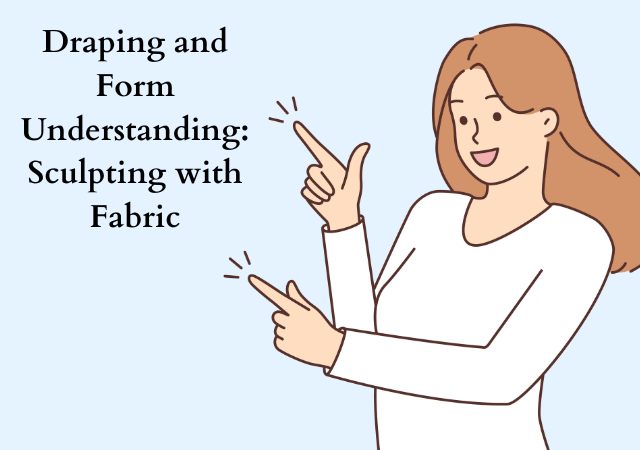
A. Importance of Draping in Garment Design
Draping is an art form that brings garments to life on a three-dimensional canvas. Unlike traditional flat pattern making, draping involves manipulating fabric directly on a dress form or model to create dynamic shapes and silhouettes. This technique allows designers to explore the interplay of fabric and form, resulting in designs that are both visually striking and structurally sound.
B. Creating Three-Dimensional Designs on a Mannequin
Working with a mannequin allows designers to experiment with proportions, volume, and structure in real-time. Draping on a mannequin provides a tangible understanding of how fabric behaves and allows for immediate adjustments to achieve the desired aesthetic. It’s a hands-on approach that adds a tactile dimension to the design process.
C. Understanding How Fabric Interacts with the Human Body
Understanding the human body and how fabric interacts with it is fundamental to creating garments that not only look stunning but also feel comfortable to wear. Draping techniques help designers tailor their creations to enhance the natural curves and movements of the body, resulting in garments that are both aesthetically pleasing and functional.
VIII. Marketing and Branding: Crafting a Designer Identity

A. Building a Personal Brand as a Designer
In a saturated market, building a distinct personal brand is essential for a designer’s success. Beyond creating beautiful garments, designers must define their unique selling propositions, values, and visual identity. Building a personal brand establishes a connection with the audience and fosters brand loyalty.
B. Effectively Marketing Designs to Target Audiences
Marketing plays a pivotal role in showcasing a designer’s work to the world. From creating engaging social media content to participating in fashion events, designers must employ effective marketing strategies to reach their target audience. Digital platforms provide a global stage, allowing designers to connect with a diverse clientele and build a strong following.
C. Utilizing Social Media and Online Platforms for Promotion
The rise of social media has revolutionized how designers promote their work. Platforms like Instagram, Pinterest, and TikTok offer designers the opportunity to showcase their creativity, engage with a global audience, and even sell directly to consumers. A strategic and visually compelling online presence is now a cornerstone of successful fashion marketing.
IX. Collaboration and Communication: Navigating the Industry Landscape
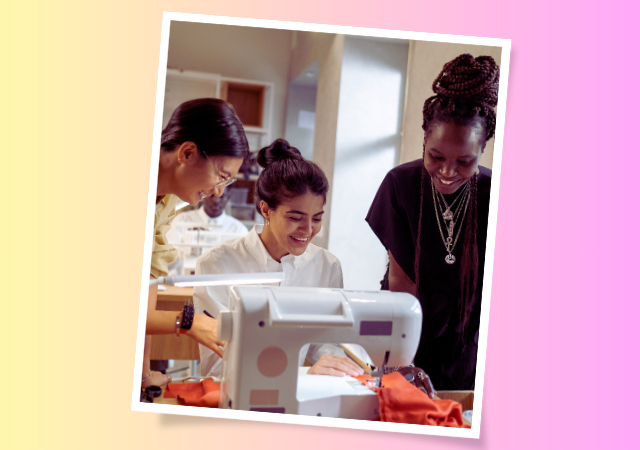
A. Working with Other Designers, Stylists, and Manufacturers
Collaboration is a hallmark of the fashion industry. Designers often work alongside other creative professionals, such as stylists, photographers, and manufacturers. Effective collaboration requires strong communication skills, the ability to compromise, and a collaborative mindset. Working seamlessly with a team ensures the successful realization of a designer’s vision.
B. Effectively Communicating Design Ideas
Clear communication is the bridge between a designer’s imagination and the realization of their vision. Whether conveying ideas to a team or explaining concepts to clients, designers must articulate their thoughts effectively. This involves using a combination of verbal communication, visual aids, and sometimes even physical prototypes to ensure a shared understanding.
C. Resolving Conflicts and Maintaining Professional Relationships
In the collaborative nature of the fashion industry, conflicts may arise. Whether it’s creative differences or logistical challenges, effective conflict resolution is a valuable skill. Maintaining professional relationships, even in the face of challenges, is crucial for long-term success in the industry.
X. Adaptability and Innovation: Thriving in a Changing Landscape
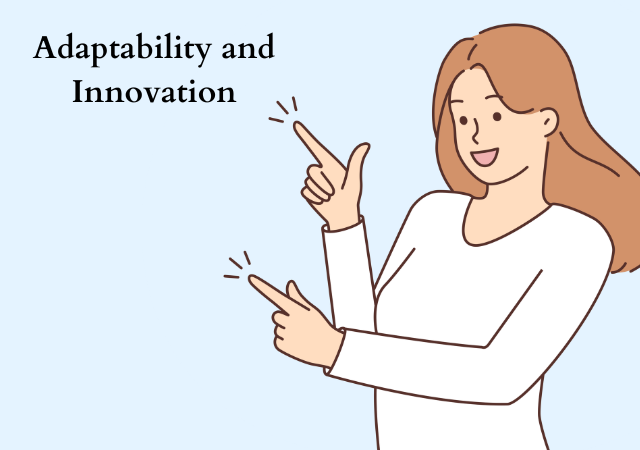
A. Keeping Up with Industry Changes and Advancements
The fashion industry is in a constant state of flux, with trends, technologies, and consumer preferences evolving rapidly. Designers must stay informed about industry changes, emerging technologies, and new materials to remain relevant and competitive. Continuous learning is a cornerstone of a successful career in fashion design.
B. Embracing Innovation in Design Processes
Innovation drives progress in the fashion industry. Whether it’s adopting sustainable practices, exploring new materials, or experimenting with unconventional design processes, embracing innovation sets designers apart. Those who push boundaries and challenge traditional norms contribute to the evolution of the industry.
C. Being Open to New Ideas and Techniques
A willingness to learn and an openness to new ideas are essential qualities for a successful designer. Fashion is a dynamic field that rewards those who are adaptable and eager to explore uncharted territories. Being receptive to new techniques, cultural influences, and design philosophies enriches a designer’s perspective and keeps their work fresh and exciting.
Conclusion (Fashion Design Essential Skills and Techniques Every Designer Should Master)

My name is Rohit Vagh and I’m a content writer specializing in fashion and lifestyle. I have three years of experience in this field and have written various articles. My writing style is creative and engaging, and I strive to create content that resonates with my readers. I have a deep passion for fashion and am constantly researching the latest trends and styles to make sure my readers are up to date. I’m excited to continue my career in blogging, and I’m always looking for new opportunities in the fashion and lifestyle space.





